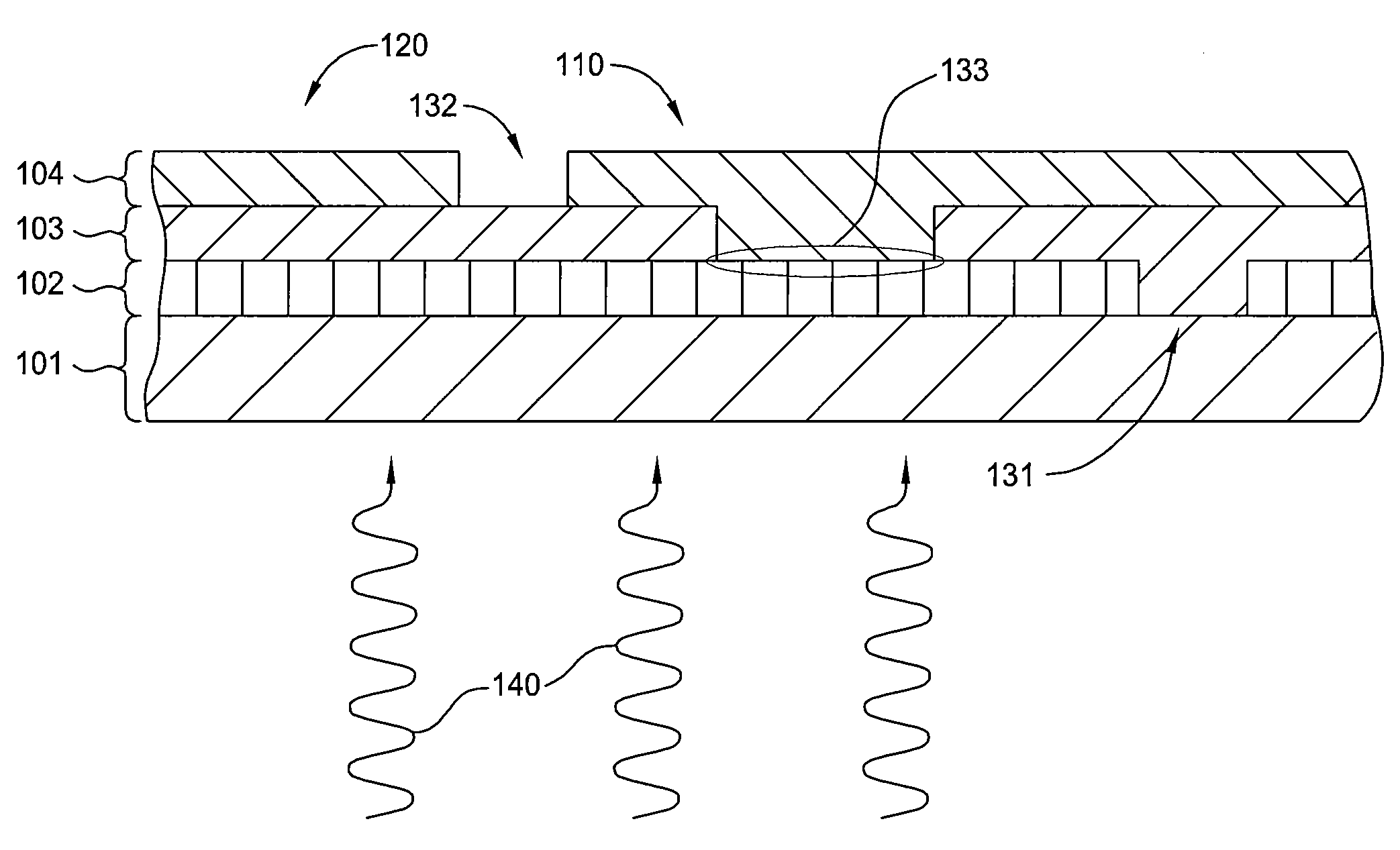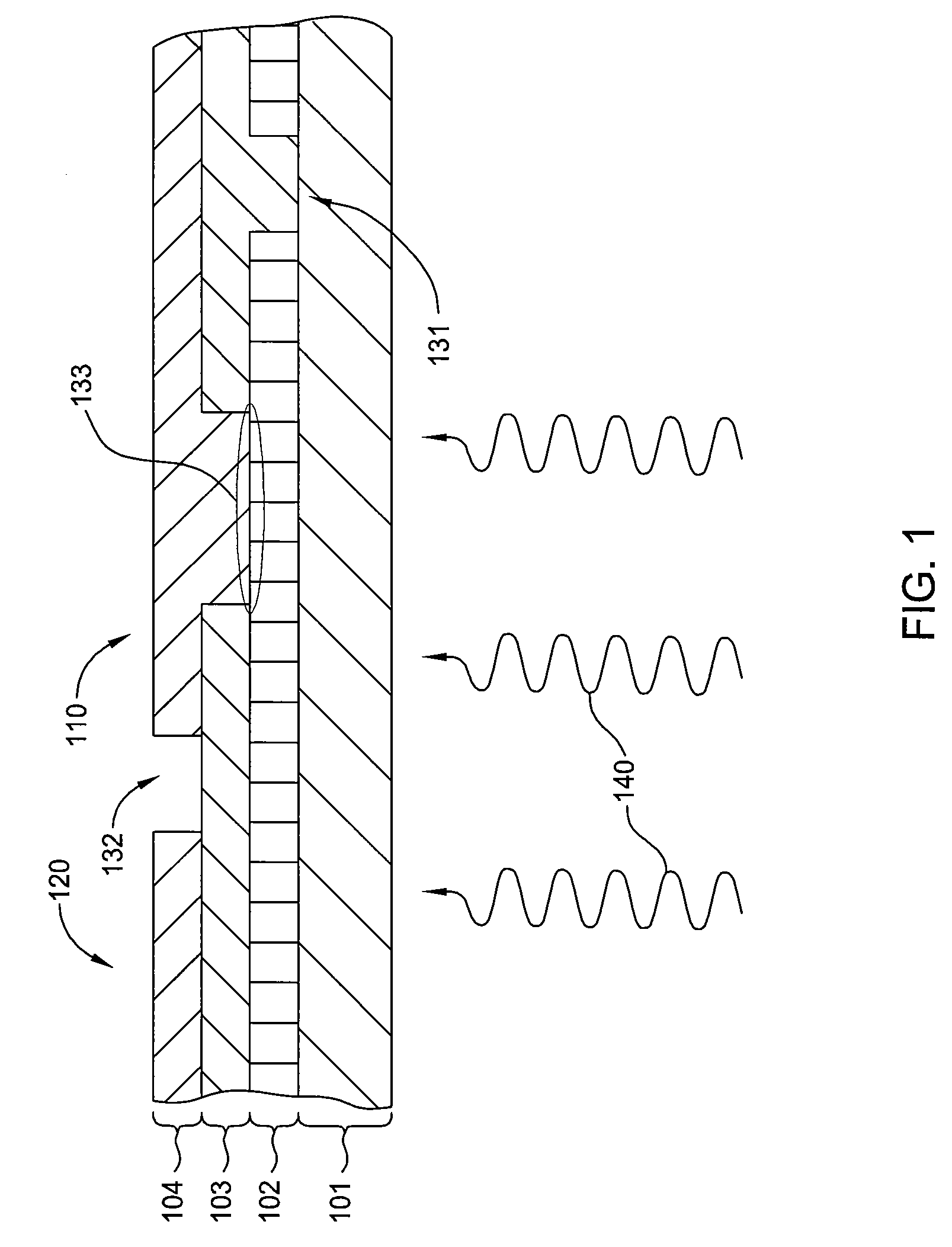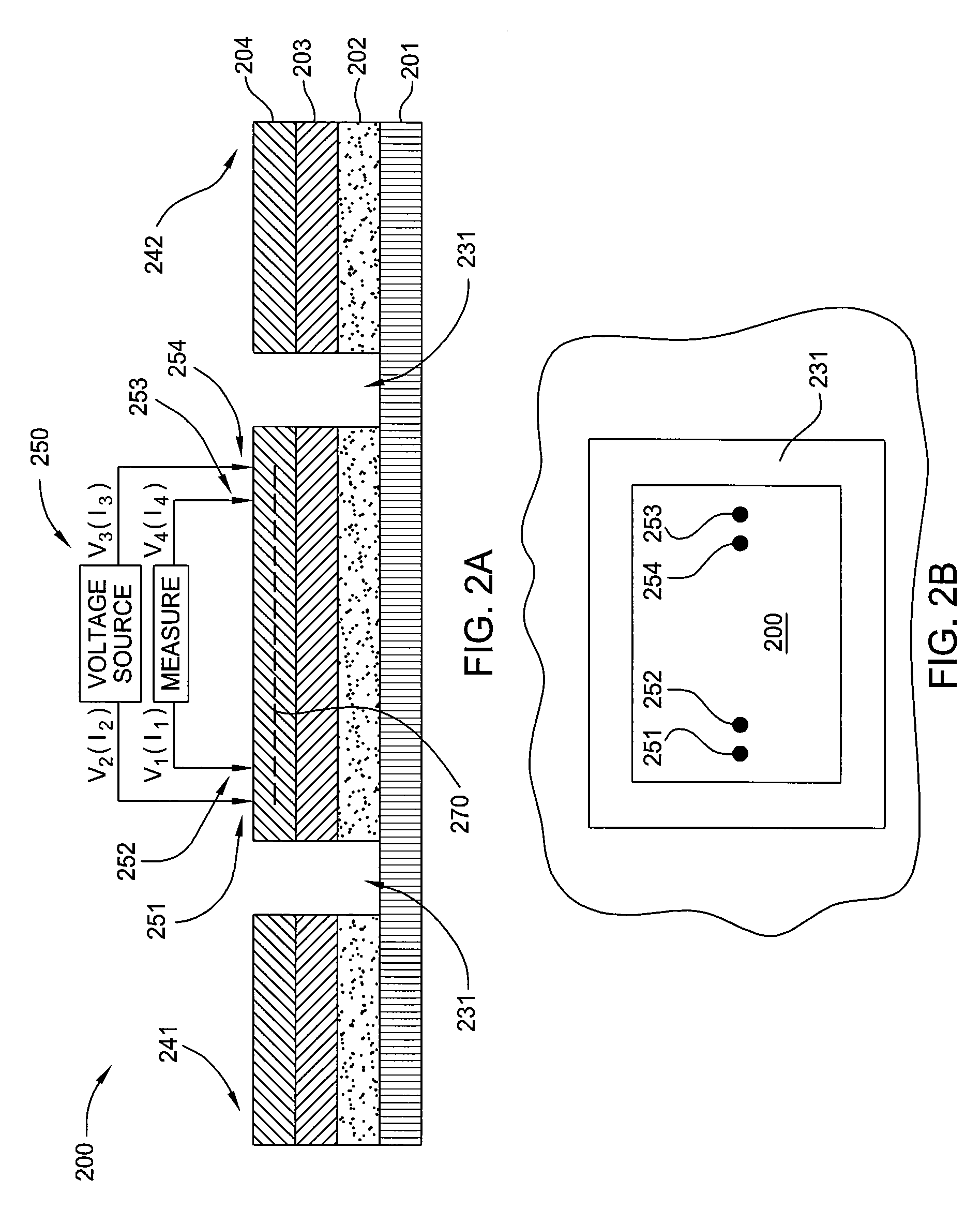Photovoltaic fabrication process monitoring and control using diagnostic devices
a technology of diagnostic devices and photovoltaic cells, applied in the direction of sustainable manufacturing/processing, semiconductor/solid-state device testing/measurement, instruments, etc., can solve the problems of insufficient data collected by current in-line testing to fully understand and characterize the formation of solar cell devices, and the limited information provided by in-line testing is difficult to analyze the root cause of a poorly performing or malfunctioning solar cell. achieve the effect of improving resistan
- Summary
- Abstract
- Description
- Claims
- Application Information
AI Technical Summary
Benefits of technology
Problems solved by technology
Method used
Image
Examples
Embodiment Construction
[0046]Embodiments of the invention contemplate the formation of diagnostic devices on a substrate that contains at least one PV cell. Such devices, also referred to as process diagnostic vehicles (PDVs), are configured for in-line monitoring of electrical characteristics of PV cell features. It is also contemplated that data collected via testing the characteristics of the formed PDVs can be used to tune and or improve the process results for subsequent PV cells that are fabricated in the production line, i.e., used as feedback for the previous fabrication processes. Alternatively, the data collected via PDVs can be fed forward in the fabrication process, so that later process steps performed on a PV cell substrate can be modified to compensate for issues detected on the PV cell substrate via the PDVs. It is further contemplated that said diagnostic devices are formed on the substrate using the same process steps for PV cell fabrication, thus minimizing or eliminating any impact of ...
PUM
| Property | Measurement | Unit |
|---|---|---|
| temperature | aaaaa | aaaaa |
| temperature | aaaaa | aaaaa |
| temperature | aaaaa | aaaaa |
Abstract
Description
Claims
Application Information
 Login to View More
Login to View More - R&D
- Intellectual Property
- Life Sciences
- Materials
- Tech Scout
- Unparalleled Data Quality
- Higher Quality Content
- 60% Fewer Hallucinations
Browse by: Latest US Patents, China's latest patents, Technical Efficacy Thesaurus, Application Domain, Technology Topic, Popular Technical Reports.
© 2025 PatSnap. All rights reserved.Legal|Privacy policy|Modern Slavery Act Transparency Statement|Sitemap|About US| Contact US: help@patsnap.com



